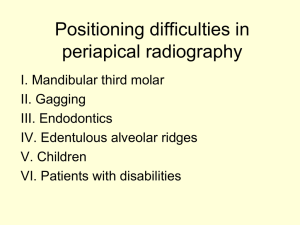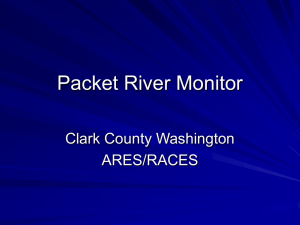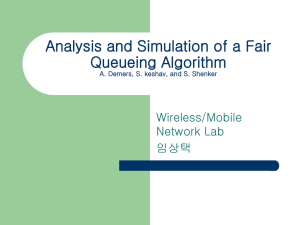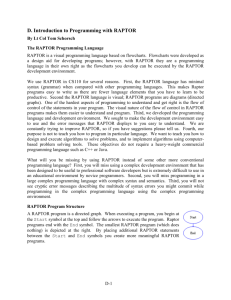Thinking Telescope
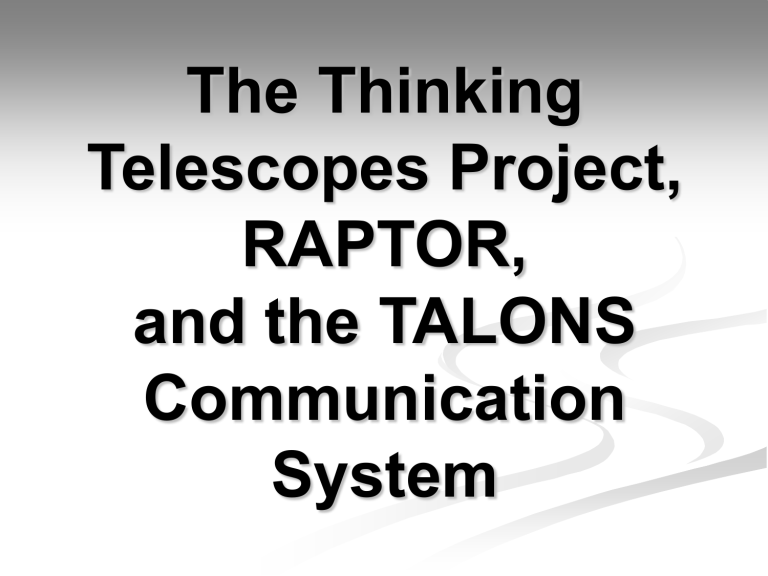
The Thinking
Telescopes Project,
RAPTOR, and the TALONS
Communication
System
Goal is to Integrate Three Components
Robotic
Hardware
Wide-Field Sky
Monitoring
Rapid Response
Telescopes,
Real Time Pipeline
Machine Learning
GENIE,
ML Classifiers,
Anomaly Detection
Context Knowledge
Record of
Sky variability
(Virtual Observatories),
Massive Distributed
Disk Array
Thinking Telescopes
An Engine for Discovery in the Time Domain
System Adaptability: Querying the
Sky
Thinking Telescope
Traditional Approach
“Hard Wired” to find specific artifacts and phenomena
Monitoring of persistent sources for important changes in real time
For example---not in previous frame, not in sky catalog, and no parallax
Adaptive processing
Machine learning
Anomaly detection and automated classification
“find more like this”
Machine Learning
Automated identification of artifacts and transients in direct and difference images.
Automated classification of celestial objects based on temporal and spectral properties.
Real time recognition of important deviations from normal behavior for persistent sources.
Memory and Context http://skydot.lanl.gov
Raptor: Sky Monitoring with Both Eyes Open
Wide-field imaging system monitors
~1300 square-deg with resolution ~35 arcsec and limiting magnitude of
R~13 th in 60 seconds. ( like the rod cells of the retina )
Each array has a “fovea” telescope with limiting magnitude of R~16.5
(60 sec), resolution of ~7 arcsec and
Gunn g (or r) filter. Provides color, better resolution, and faster cadence light curves ( cone cells of fovea )
Rapidly slewing mount places the
“fovea” anywhere in the field in <3 seconds. ( rapid eye movement ).
Two identical arrays are separated by
~38 km. ( stereoscopic vision )
Best Solution – A Distributed Sensor
Network
Ultimate Goal – To make decisions or gain knowledge based on information fused from distributed inputs
Initial work done by military and contractors to support war fighters.
Sensor elements are self sustaining and autonomous.
Sensor elements gather data on environment independently.
Data is communicated back to a central location and collaboratively processed.
Working together these elements should provide a better overall picture of the environment, than single-point sensors.
GENERAL CONCEPT FOR DISTRIBUTED SENSOR
NETWORK
ENVIRONMENT
Data
Gathering
Event
Detection
Decision
Making
Sensing Modalities Sensing Modalities nodes data data
Signal Processing
…
Signal Processing event
Collaborative Signal Processing event
The Distributed Sensor Network Idea Applied to the RAPTOR System
Data
Gathering
Event
Detection
Decision
Making data event nodes
…
event data
DSN Qualifications
In General Applied to an Astronomical System
Full scalability.
Any number of systems coming and going
Fault tolerance.
System dropouts, weather, instrument failure, etc.
Mosaic coverage.
L arge area combined imagining
Depth of data. Multiple instruments on same object and/or a variety of instrument sensitivities
Temporal coverage.
Data covering continuous observations
TALONS Components
Client: resides on each client computer
Provides connections back to server receive and/or transmit.
Monitors connections and repairs or notifies as necessary.
Filters incoming information based on previous activity, interests, operational capability of client system.
Logs activity on client
Prepares data for transmission
Decodes data for response
Injector: accessed with client
Provides a method for manual alert generation
Provides method for manual response follow-up
Monitor: run from any subscriber’s computer
Shows real-time activity of client systems and
Central
Central:
Provides connection point for clients to
transmit and/or receive.
Provides security for connections.
Provides cooperative analysis .
Relay from outside networks to clients.
Logs activity.
Filters information to and from clients.
Issues activity requests or alerts via sockets and e-mails.
TALONS
Monitor
TALONS
Injector
The Communication Packets
All Packets Packet Size
Identifier byte
Data Bytes
What type, who sent 1 int
How much data to follow 1 int
GCN
Header packet (as above)
GCN Alert Data All data (as per GCN packet info) 40 int
TALONS
Header Packet (as above)
TALONS Data –
Target Follow-up Requests (Alerts)
Target of Opportunity Requests
Follow-up responses
Status
Header Packet (as above)
Status Data – Instrument or Observatory Status
9 int
5 int
NOTE: All int values are 32 bit
Breakdown of Packet
GCN Packets
Information
Packet details at http://gcn.gsfc.nasa.gov/sock_pkt_def_doc.html
TALONS Packets
1 TrigNO
2 TID
3 TOO
4 Time
5 RA
6 DEC
7 Mag
8 MagErr
}
9 EOF
TrigNo - Trigger (or Alert) Number
For Initial Spotting, returns a 0 to Central and Central assigns a new value.
For follow-up observations, Trigger number is passed as the event identifier
TID –Trigger ID
(Bit field definitions, encoded & decoded at client)
Imagine Instrument or Observatory systems ID
Follow-up or Initial spotting
Either Suspected or Confirmed target type (Nova, SN, etc.)
Known or new target object
TOO – Target of Opportunity
(Bit field definitions, encoded & decoded at client)
Works with TID above to define type details
Defines whether this packet is for a TOO
Identifies if the event is transient (approaching, or receding from event.
Requested Observation Type (Spectra, Photon Counting, Any, All, etc)
Requested Observation Range (FIR, Gamma, Radio, etc.).
Requested imaging durations (How many seconds?)
Time - Time imaged expressed in TJD
RA - Target Coordinate
DEC - Target Coordinate
Mag - Magnitude of target
MagErr - Error in Magnitude measure
NOTE: RA and DEC errors are to come
Summary
TALONS has been in operation now for three years, supporting the RAPTOR system
TALONS can easily grow to support any number of additional robotic and manual telescopic systems
TALONS works well in concert with GCN. No additional coding necessary to receive GCN.
The TALONS Client library can quickly and easily be added to any existing telescope operation software and can quickly be configured to support the interests of the user.
The information packets are flexible and can be changed to suit needs or additional packet types can be added as needed.

